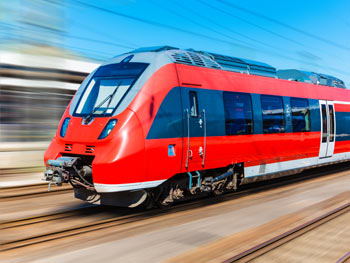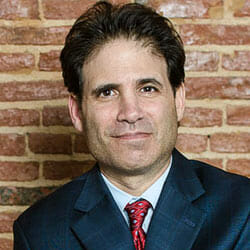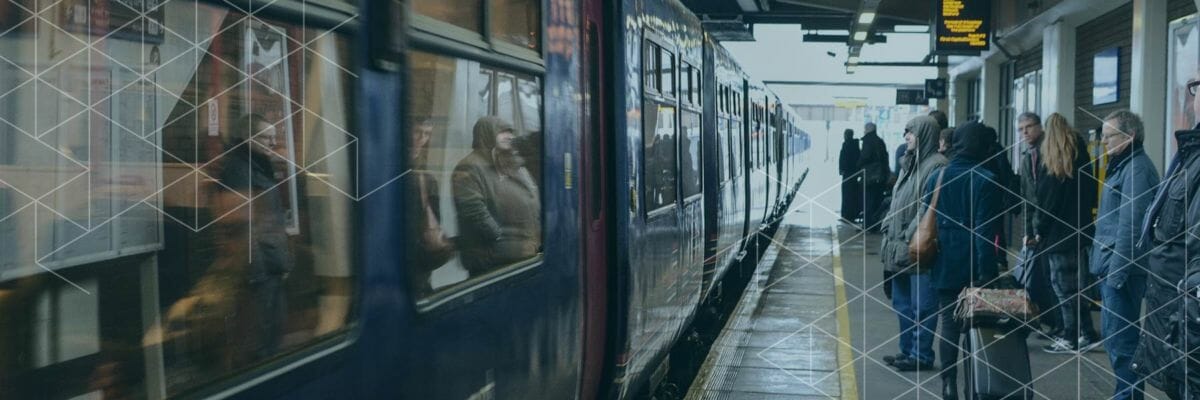Train Accident Lawyer
 Overcrowded highways and the desire to save time have led a number of individuals to seek alternative methods of transportation to get to and from their destinations. Work commuters especially have turned to commuter trains and subways as a more relaxing, economical and convenient mode of transport to and from work. And, along the Northeast Corridor, it can take less time to ride the rails than fly. On Amtrak, Baltimore is less than two hours from Philadelphia and a little over three hours from New York City. That might be less time than you’d spend at the airport, considering security lines.
Overcrowded highways and the desire to save time have led a number of individuals to seek alternative methods of transportation to get to and from their destinations. Work commuters especially have turned to commuter trains and subways as a more relaxing, economical and convenient mode of transport to and from work. And, along the Northeast Corridor, it can take less time to ride the rails than fly. On Amtrak, Baltimore is less than two hours from Philadelphia and a little over three hours from New York City. That might be less time than you’d spend at the airport, considering security lines.
However, with the advent and increase in popularity of these alternate methods of transportation come questions as to their safety. Train accidents are among the most tragic and costly of all accidents that a Baltimore personal injury attorney can handle. Because of the sheer size of the trains and the high speeds that can be involved, these accidents almost always end with fatalities and serious injuries.
From 2012 through 2015, 92 total train crashes were responsible for 33 deaths in Maryland.
Passenger Train Routes and Accidents
Baltimore is served by several Amtrak routes, notably the Northeast Regional and Acela Express trains. These two routes have the highest ridership of all Amtrak routes, with the Northeast Regional in first place and Acela Express in second.
Busier routes usually mean a greater number of accidents. Amtrak had 31 accidents in Maryland alone from 2012 through 2015. Of those 31 accidents, 7 were caused by derailments during the time period, roughly averaging about two a year. (Nationally, Amtrak derailment accidents have averaged about 27 every year since 2011.) Derailment and human error are the most likely causes of passenger train crashes.
Amtrak’s safety record has improved over the years, with deaths dropping nationwide to levels not seen since the late Eighties to early Nineties. Generally speaking, crashes are fewer, especially those due to track problems. However, while deaths are down, passenger injuries are rising sharply, hitting an all-time high of over 800 in 2011 nationwide. Both 2010 and 2012 saw nearly 800 injuries each. An analysis done in 2015 concluded that, when adjusted for passenger miles ridden, passengers on Amtrak become injured 58 times more often than passengers on French railroads.
We have seen some horrific passenger train crashes in Maryland over the years:
- June, 2009: Two D.C. Metrorail trains collided near Maryland’s Fort Totten station, killing 9 people and injuring 80. The crash was caused by a failure in the automatic train control system, which did not detect the presence of the first train; this led to the second train’s hitting it from the rear.
- February, 1996: A collision between a MARC commuter train and Amtrak’s Capitol Limited Train 29 in Silver Spring left a total of 11 dead and 26 injured. Human error was the major reason for the crash.
- January, 1987: An Amtrak train carrying 600 people on its way to Boston from Washington, D.C., crashed into a set of Conrail freight locomotives 18 miles northeast of Baltimore. The accident claimed 16 lives and injured 175 people. Negligence on the part of the engineer and the brakeman was the cause.
At the time, the 1987 accident was the deadliest crash in Amtrak history . . . until the 2015 wreck north of Philadelphia that left 8 people dead—3 with Maryland ties—and over 200 injured out of 238 passengers. It’s worth noting that in April, 2016, another Amtrak crash outside Philadelphia, in Chester, killed two persons, sent more than 30 to the hospital, and shut down train traffic on the Northeast Corridor for more than a day.
While passenger train crashes, thankfully, do not occur terribly often, when they do, they are often catastrophic. With Amtrak carrying more than 11.4 million passengers per year on the Northeast Regional route alone, as it did during fiscal year 2013, the deadly potential is ever-present.
Freight Train Routes and Accidents
We have a lot of freight moving through Maryland, and have suffered more than our share of major accidents.
The two biggest freight carriers in our state are CSX Transportation (CSX) and Norfolk Southern Railway Company (NS). Together, they were responsible for 57 accidents in Maryland from 2012 through 2015. Of those 57 accidents, 35 were caused by derailments, by far the biggest cause—close to two-thirds (61.4 percent) of all freight railway accidents during the time period.
Derailments are usually due to problems with train tracks; the biggest cause of derailments for all varieties of trains is broken rails and welds—15 percent historically, according to the Federal Railroad Administration (FRA). Derailments have been the cause in our area of four recent, major freight railway accidents:
- A CSX train derailed in Ellicott City during August, 2012, killing two women by burying them under a load of coal. An investigation by the National Transportation Safety Board (NTSB) concluded that the likely cause of the derailment was a broken rail.
- In the incident where a CSX train derailed in Rosedale during May 2013 after hitting a garbage truck, the truck’s driver was injured, leading to a situation where the expertise of a Baltimore truck accident lawyer could be crucial. The truck’s driver was injured, two train cars caught fire, buildings were damaged by an explosion, and people within a 20-block radius were asked to evacuate because of the dangers from burning chemicals. Hazardous materials crews were sent in and the NTSB investigated the accident.
- A CSX coal train derailed in Bowie during May, 2014. There were no injuries or deaths, but firefighters and hazardous materials workers reported to the scene as a precaution.
- A CSX train derailed in Baltimore at the Howard Street Tunnel in June, 2016, carrying the highly-flammable liquid acetone. While there were no injuries, fires, or explosions, investigators expressed concern because a 2001 derailment in the same tunnel was responsible for a fire that lasted six days and shut down much of Baltimore’s downtown.
In addition, CSX trains full of flammable crude oil continue to move through our Baltimore neighborhoods. The tank cars that CSX uses are considered to be at greater risk for fires and explosions than other types; they have been called “the Ford Pinto of rail cars.” (Ford Pintos were Seventies cars that were recalled and eventually discontinued because of fires and explosions that occurred during rear-end collisions.
A Train Accident Lawyer You Can Trust
Steve Heisler has been practicing law in Maryland since 1988. In 1996, however, he decided to focus exclusively on personal injury law. Why? Steve has a heart for helping people. He determined that his education and experience could best be put to use advocating for the rights of folks who were harmed through the negligent actions of others.
If you or someone you love has been injured in a train accident in Maryland, contact the Law Offices of Steven H. Heisler for a consultation regarding your situation. You should not delay, because there is a statute of limitations – or a time limit – for filing personal injury claims. Baltimore attorney Steven H. Heisler has the experience necessary to help you get your life back. Wondering whether you have a case? Contact Steve today for a free and confidential consultation by calling (410) 625-4878, or use our online contact form.

Attorney Steve Heisler
Steve Heisler decided in 1996 that he was going to focus his law practice exclusively on injury cases. Since then, he has been representing injured people against insurance companies, disreputable medical practitioners and Big Pharma, and doing it with compassion, honesty and level-headed rationality. [ Attorney Bio ]


